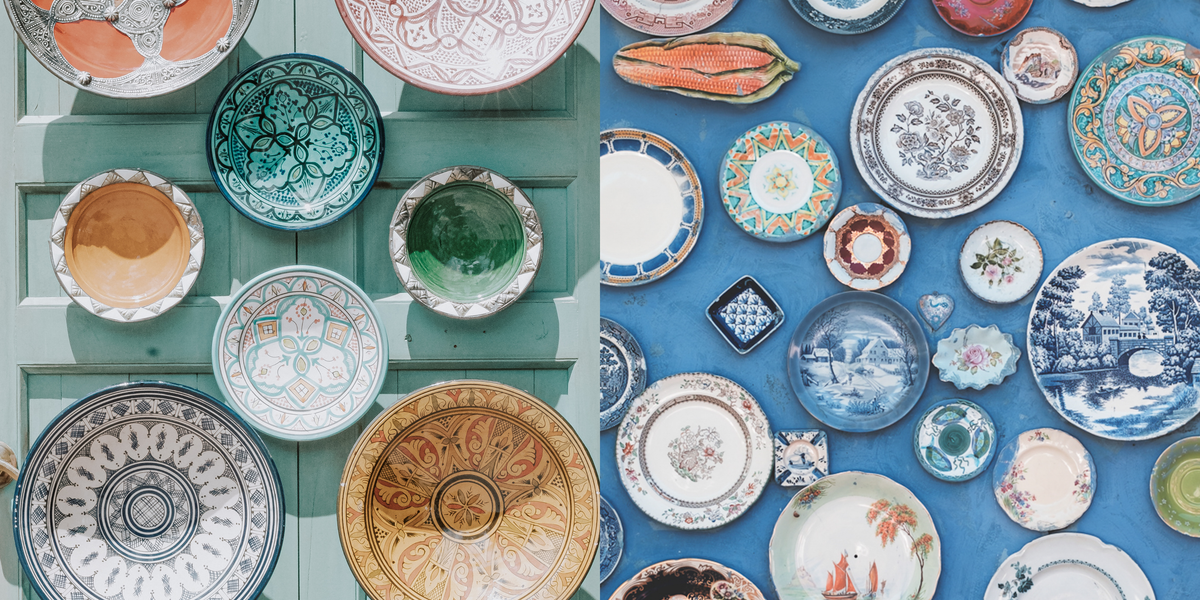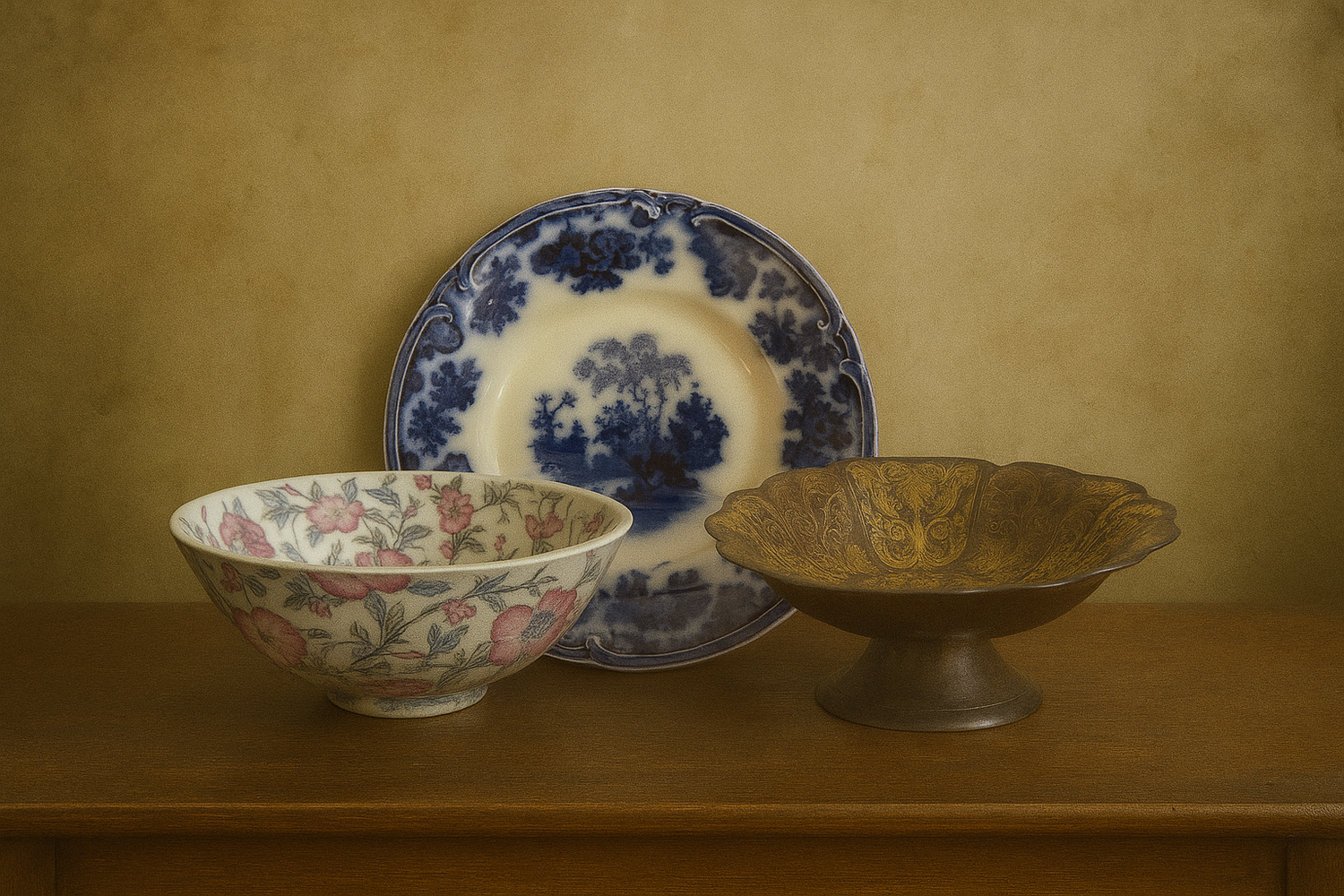
Beginner’s Guide to Collecting Vintage Dinnerware
|
|
Time to read 5 min
|
|
Time to read 5 min
There is something undeniably charming about vintage dinnerware. Maybe it’s the nostalgia of seeing a familiar CorningWare pattern your grandmother baked casseroles in, or the thrill of discovering a bold Fiesta piece at a thrift shop. Some collectors seek rare, valuable designs, while others simply want to create a colorful, welcoming table. Whatever the reason, vintage dishes turn everyday meals into small celebrations. This guide will help you understand what makes them special, which brands to look for, and how to bring them into your home with style.
Collecting vintage dishes isn’t just about filling shelves. It’s about connection to family memories, design history, and even sustainability.
When you’re treasure hunting at an antique store, flea market, or estate sale, it helps to have a sense of what separates a valuable dish from one that’s just old. Value usually comes down to a mix of brand recognition, scarcity, condition, and design. Let’s break it down:

Beyond these “technical” factors, there’s also an emotional layer to collecting. Many buyers aren’t looking for the most valuable piece, they’re searching for a dish that stirs a memory. Maybe it’s the exact casserole dish their grandmother used for Sunday dinners or a patterned plate that reminds them of family holidays. In that sense, the true value of vintage dinnerware often lies as much in sentiment as it does in price tags.
First launched in 1958, CorningWare transformed kitchenware with its durable glass-ceramic material that could handle both freezing and baking. For decades, its cheerful floral patterns became staples in American homes.
Popular CorningWare Patterns to Watch For:
Tip: The rarer patterns, especially Wild Flower and Spice O’ Life, can sell for significantly more than their original price.
For color enthusiasts, Fiesta is hard to beat. Introduced in 1936, it became famous for solid-glazed ceramics in bold hues. The company kept things interesting by retiring and introducing new colors, keeping collectors on their toes.

How to Spot Authentic Vintage Fiesta:
Most valuable color? The elusive “Medium Green” from the 1960s tops the list. Other originals like cobalt blue, ivory, and red also remain in demand.
For those who want elegance, Spode dinnerware delivers. Founded in 1770 in England, the brand pioneered Bone China and perfected blue transferware printing. Spode became a staple in formal dining rooms and is still treasured today.

Spode Designs:
How to Check Authenticity: Genuine Spode pieces usually have clear stamps or markings. Some older versions carry the name “Copeland & Garret,” a brief name change in the 1800s. Unmarked plates are often reproductions.
Many collectors wonder whether it’s safe to eat from vintage plates. The answer is usually yes, but with a few precautions. Some older dishes, especially those with metallic trims or brightly painted glazes, may contain lead since it wasn’t fully phased out until the late 1970s. If you’re unsure, it’s worth using an inexpensive lead testing kit at home for peace of mind. Condition also plays a big role; cracks, chips, or crazing (those fine lines in the glaze) can harbor bacteria, making a piece better suited for display than for everyday use. When shopping, it also helps to buy from reputable sellers, such as antique malls or trusted vintage specialists, since they often vet their stock for safety. And if a beloved dish does test positive for lead, don’t feel like you have to throw it away; many collectors repurpose these pieces as décor, using them for display, storage, or creative projects instead of at the dinner table.
Not every vintage plate or teacup has to live in the kitchen cabinet—many pieces shine just as beautifully when used in other parts of the home. One popular idea is to turn vintage dinnerware into wall décor, especially with blue and white vintage dinnerware, which looks stunning when arranged as a gallery display. Smaller dishes can be repurposed as trinket trays, perfect for holding jewelry, keys, or loose change on a dresser or entryway table. Teacups and shallow bowls also make charming candle holders—just pour in wax and a wick, and you’ll have a homemade candle with a touch of history. In the bathroom, vintage bowls can serve as organizers for soaps, perfumes, or cotton swabs, adding both practicality and charm to your space. And even broken pieces don’t have to go to waste—many collectors repurpose them into mosaic art, creating one-of-a-kind mirrors, tabletops, or garden decorations. In this way, vintage dinnerware becomes more than just tableware; it’s a versatile investment that brings character and creativity into every corner of your home.
From casual brunches with Fiesta bowls to holiday dinners served on blue and white Spode plates, vintage dinnerware has the power to transform everyday meals. These pieces connect us to history, tell stories of craftsmanship, and bring personality into the home.
If you’re ready to dive in, explore our curated selection of antique and vintage dinnerware collections. Who knows? Your next favorite dish might be waiting to join your table.
If this blog sparked your curiosity, why not take a look at our collection? From timeless antique porcelain plates to delicate antique blue and white porcelain plates, each piece in our inventory carries beauty and character. Whether you are searching for a centerpiece for your dining table or a collectible item with history, our selection of ceramic or porcelain dinnerware has something worth exploring.

Do not just settle for everyday plates. Choose pieces that tell a story and elevate your dining experience. Whether you lean toward a ceramic vs porcelain plate for daily use or want to own a one-of-a-kind antique porcelain plate, now is the perfect time to make your choice.